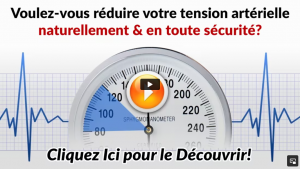-blood Pressure and Headaches: Breaking the Cycle

Introduction: Exploring the Link Between Blood Pressure and Headaches
What Exactly Is Blood Pressure and Why Should You Care?
Blood pressure is really just the force with which your blood pushes against your arteries as it makes its way around your body. Think of it as a measure of how well your circulatory system is doing its job of delivering oxygen and nutrients to your cells. When your blood pressure is just right, your organs can keep on thriving. But when it fluctuates, those changes can echo throughout your whole system. Today, we’re going to dive into what blood pressure is all about and why keeping it steady can be especially important if you're dealing with headaches.
There’s more to your blood pressure than just the numbers you see at the doctor’s office. It’s a key indicator of your heart health and can be a red flag for potential issues like heart disease or stroke. Whether it’s your diet, stress levels, or even the amount of sleep you’re getting, many factors can sway these numbers. Understanding your blood pressure is like having a little window into your overall health—it gives you the power to make better lifestyle choices and treatment decisions.
So, What Is a Headache Anyway?
Headaches aren’t just a minor annoyance; they can vary widely in their intensity and form. One minute you might be dealing with a gentle, nagging tension headache that feels like a tight band around your head, and the next, you could be sidelined by a full-blown migraine that leaves you debilitated. These aches come with a host of triggers—anything from dehydration and stress to changes in the way your blood vessels work.
While the term “headache” might sound simple, there’s a lot going on beneath the surface. By taking a closer look at different types such as cluster, sinus, and tension headaches, you can learn to recognize the clues your body gives you. That insight can be a real game changer when it comes to tweaking your habits or picking the right treatment plan.
The Surprising Connection Between Blood Pressure and Headaches
Believe it or not, blood pressure and headaches are more intertwined than you might think. Many people notice that their blood pressure seems to fluctuate right when a headache hits. This isn’t just luck—your cardiovascular system plays a crucial role in controlling blood flow, and any hiccup there can set off headache signals. Spotting this link might just be the first step toward breaking the cycle of recurring pain.
As we chat more about this intriguing connection, keep in mind that both blood pressure and headaches can be influenced by a mix of physical and environmental factors. Simple things like your diet, daily stressors, and even your sleep routine can be the spark that lights the fire. By understanding how these pieces fit together, you’ll see how tweaking one part of your lifestyle can lead to improvements in both areas. So, let’s roll up our sleeves and dive into the science behind these issues, along with some practical tips to take charge of your health.
The Science Behind Blood Pressure and Headaches
The Body’s Inner Workings: How Blood Pressure and Headaches Are Linked
At the core of the relationship between blood pressure and headaches is the way our body handles blood flow and nerve signals. When your blood pressure goes off course—either spiking or dropping—it can change how your blood vessels open up or tighten up. This, in turn, might kick off a headache by affecting the pressure and oxygen flow to your brain. Digging into these mechanisms can offer a clearer picture of how your cardiovascular system is connected to those pesky headache symptoms.
Even minor shifts in blood pressure can send your body into a mini frenzy, stressing out the vascular system and possibly triggering everything from mild discomfort to full-on migraine pain. Think of it as a domino effect: a small variation sets off a chain reaction in your brain receptors that can lead to a headache. So, whether you're susceptible to a quick tension headache or more severe pain, understanding these processes can be key to managing and even preventing those episodes.
How Your Blood Vessels and Brain Collaborate (or Don't)
Your blood vessels aren’t just passive pipes carrying blood—they’re active players that help keep your brain properly oxygenated. When your blood pressure shifts, your brain works hard to adjust the flow by widening or narrowing these vessels, a process known as vasodilation and vasoconstriction. This balancing act, however, can sometimes put unwanted pressure on nearby nerves, leading to that familiar ache.
Grasping how these vascular responses work is vital for understanding why changes in blood pressure often come hand-in-hand with headaches. When your body experiences sudden pressure changes, it can disrupt the smooth delivery of blood to the brain, potentially sparking a headache as a kind of “warning” sign. Keeping an eye on these signals is a small but important step in managing your overall wellbeing.
What the Latest Research Is Telling Us
Science is continually shedding new light on how blood pressure and headaches interact. Researchers are now zeroing in on how factors like stress, genetics, and lifestyle all come together to influence these systems. There’s also exciting work being done on biomarkers that might one day help predict who’s at risk of both high blood pressure and chronic headaches.
One promising avenue of research is the role of inflammation. Some scientists believe that even low-level inflammation could be the missing link between elevated blood pressure and persistent headaches. With new techniques in imaging and biochemical analysis, the quest is on to develop holistic treatment plans that tackle both issues. As our understanding deepens, doctors are better positioned to suggest preventive measures, helping you see just how important it is to keep your lifestyle in check.
Recognizing the Signals: Blood Pressure and Headaches in Everyday Life
Keep an Eye Out: Early Warning Signs to Watch For
Catching the early hints of blood pressure fluctuations and headaches can be a real lifesaver. Ever felt a bit dizzy or noticed a subtle heaviness in your head before a full-blown headache? Or maybe you experience a bit of chest discomfort along with a dip in energy? These small signals might be your body’s way of waving a red flag, urging you to pay closer attention.
Even if these symptoms come and go, noticing them is key. By tuning in to how your body feels, you can start to see patterns emerge—ones that might help you better understand your own unique health rhythms. Keeping a regular log of these moments can be surprisingly helpful, offering clues that guide you toward making smarter decisions and even alerting you to when it might be time to consult a professional.
Understanding Different Types of Headaches
Not all headaches are cut from the same cloth. Tension headaches, for instance, usually produce a steady, dull ache that wraps around your head, often linked to muscle strain or stress. Migraines, by contrast, tend to hit hard—with pulsating pain, heightened sensitivity to light and noise, and sometimes nausea. Distinguishing between these types can help you figure out if your blood pressure might be playing a role in how often or how badly headaches strike.
Keeping track of your headache episodes, including how long they last and what other symptoms accompany them, can really pay off when you’re talking to your doctor. This kind of personal diary isn’t just a record—it’s a tool that empowers you to understand your own body’s language better. In the end, this makes it easier to identify whether your headaches are tied to blood pressure changes and what steps might best address the issue.
When to Hit the Brakes and Seek Help
It’s not always easy to decide when to reach out for professional advice, especially if your headaches pop up now and then. However, if you find that they’re becoming more frequent, more intense, or if they come along (no pun intended) with symptoms like blurred vision, chest pain, or sudden dizziness, it might be time to take them seriously.
While an occasional headache might not raise alarm bells, recurrent episodes—especially those linked to fluctuating blood pressure—warrant a conversation with a healthcare professional. Early intervention can be a game changer, helping to nip potential complications in the bud and get you back to feeling like yourself. Don’t hesitate to get advice sooner rather than later—after all, keeping tabs on these signs now can safeguard your health in the long run.
Everyday Choices That Impact Blood Pressure and Headaches
How Your Diet Plays a Part
What you eat on a daily basis can have a huge impact on your blood pressure, and by extension, the frequency and severity of your headaches. For example, meals high in sodium can set your blood pressure on the rise, potentially triggering headaches as your blood vessels react. On the flip side, a balanced diet filled with fruits, veggies, whole grains, and lean proteins can help keep your blood pressure in check and maybe even ease your headache struggles. It pays to be mindful of hidden salts lurking in processed foods—sometimes a little dietary tweak can go a long way.
Hydration is another really important piece of the puzzle. Dehydration can often mimic or even induce headache symptoms while messing with your blood pressure. By choosing whole, natural foods and cutting back on processed options, you’re giving your body the tools it needs to stay balanced. Try experimenting with low-sodium recipes that not only taste great but also support your cardiovascular health. It’s a win-win for both your blood pressure and your headache management.
The Impact of Stress, Sleep, and Those Sneaky Triggers
Let’s face it—modern life can be stressful, and that stress often takes a toll on both your blood pressure and your head. When you’re under constant tension, your blood pressure can shoot up, and for some people, that means a headache is never far behind. Add in a few nights of poor sleep, and you've got a recipe for an unhappy body that struggles to keep both systems steady.
Finding ways to unwind is key. Whether it’s meditation, deep breathing exercises, or simply setting up a soothing bedtime routine, these practices can work wonders for calming your mind and lowering your blood pressure. Not only might you notice a reduction in headache frequency, but you could also see an overall boost in your quality of life. Explore different relaxation techniques, see what clicks for you, and fine-tune your habits to keep those unwelcome headaches at bay.
Getting Active: The Benefits of Regular Exercise
Exercise really is one of the best moves you can make for your overall health—it works wonders for both blood pressure and headaches. A bit of regular physical activity, like brisk walking, yoga, or cycling, can boost healthy circulation, keep your heart in shape, and even help ease the tension that might lead to a headache. Plus, when you’re active, your body releases endorphins, which are like natural painkillers.
Incorporating moderate exercise into your routine helps smooth out the highs and lows of blood pressure, reducing the risk of vascular headaches. Just be sure to strike a good balance between breaking a sweat and giving your body time to recover. Whether you’re squeezing in a quick walk on your lunch break or joining a regular fitness class, a consistent activity routine can soon become a cornerstone in managing both your blood pressure and headache episodes.
Medical Insights on Tackling Blood Pressure and Headaches
Traditional Treatments at a Glance
When it comes to dealing with high blood pressure and headaches, conventional medical treatments usually come first. Doctors typically start by digging into what might be causing your symptoms—whether that’s related to diet, stress, or another underlying issue—before recommending a treatment plan that’s just right for you. From blood pressure medications to various headache remedies, the aim is to target your specific needs, considering how often and how severely you’re experiencing these issues.
Often, the best results come from a mix of tailored lifestyle changes and the right medications. Whether it’s taking a specific antihypertensive drug or using pain relief options during a headache flare-up, the strategy revolves around restoring your body’s natural balance. This comprehensive approach not only helps ease the pain in the short term but also sets the stage for better long-term management. In short, working closely with your healthcare team to fine-tune your treatment plan is a proactive step toward reclaiming your health.
The Role of Medications: What to Expect
Medications can be a real game changer in managing blood pressure and keeping headaches at bay. There are several types of drugs—from beta blockers to calcium channel blockers—that work to keep your blood pressure steady, which often means fewer headaches. At the same time, pain relievers can help you get through those moments when a headache flares up. But it’s important to remember that every medication has its own set of effects and potential side effects, so finding the right balance is key.
While many people experience wonderful results from these medications, it’s a very personal process. What works wonders for one person might not be the best fit for another, and sometimes adjustments in dosage or even a switch in the medication might be needed. Understanding these effects—and keeping an open line of communication with your doctor—ensures you get a treatment plan that truly works for you.







